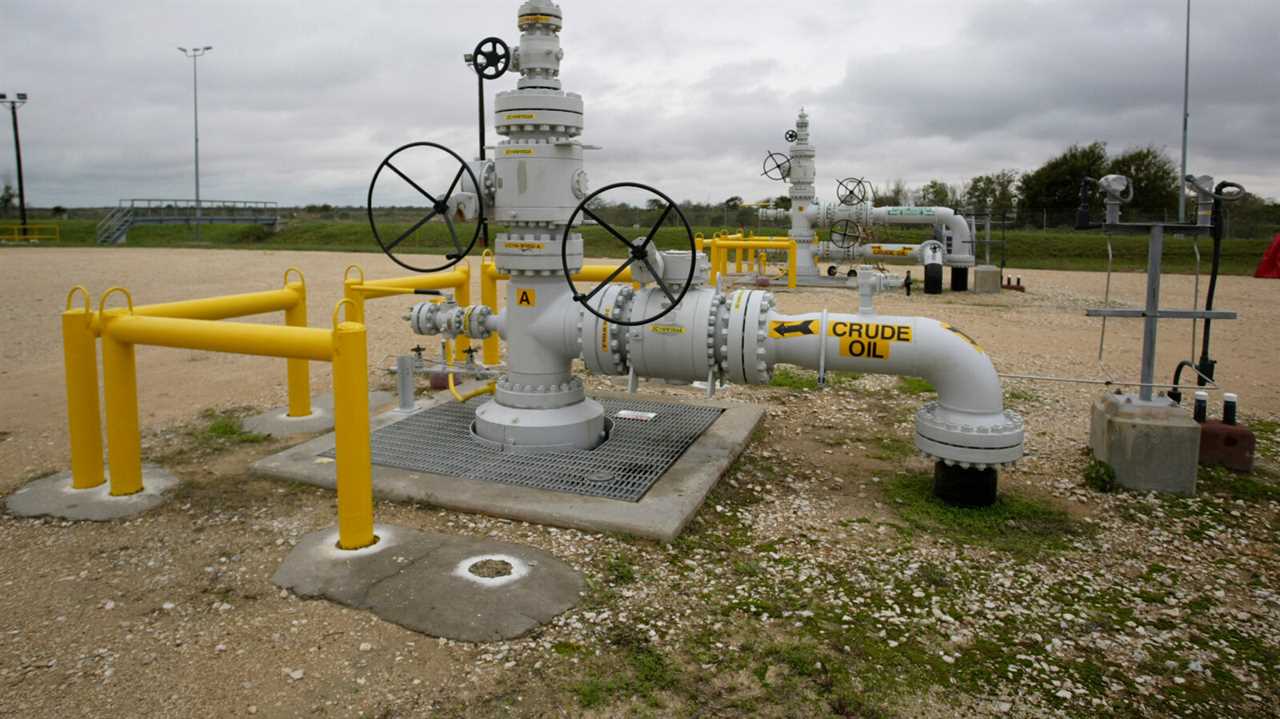
WASHINGTON — President Biden is considering a plan to release one million barrels of oil a day from the Strategic Petroleum Reserve for as long as 180 days, a move that would add a large amount of oil to the global market, according to a person familiar with the White House deliberations on the issue.
Mr. Biden could announce the plan to tap the reserve as soon as Thursday, said the official, who requested anonymity because the plan was not ready to be announced Wednesday night. The idea would be to combat rising prices at the pump.
The president’s public schedule, which was released Wednesday night, said he would deliver remarks Thursday afternoon on the administration’s “actions to reduce the impact of Putin’s price hike on energy prices and lower gas prices at the pump for American families,” a reference to President Vladimir V. Putin of Russia.
The price of West Texas Intermediate, the American crude oil benchmark, fell about 4 percent late Wednesday evening after the plan was reported, by Bloomberg News. The price of Brent crude, the global benchmark, was similarly down, about 3.5 percent.
If fully enacted, the president’s plan would release 180 million barrels from the reserve, which is intended to help the United States weather spikes in demand or drops in supply. About 550 million barrels are in the reserve, which has a reported total capacity of about 714 million barrels.
Understand Inflation in the U.S.
- Inflation 101: What is inflation, why is it up and whom does it hurt? Our guide explains it all.
- Your Questions, Answered: Times readers sent us their questions about rising prices. Top experts and economists weighed in.
- Interest Rates: As it seeks to curb inflation, the Federal Reserve announced that it was raising interest rates for the first time since 2018.
- How Americans Feel: We asked 2,200 people where they’ve noticed inflation. Many mentioned basic necessities, like food and gas.
- Supply Chain’s Role: A key factor in rising inflation is the continuing turmoil in the global supply chain. Here’s how the crisis unfolded.
Mr. Biden has been under increasing political pressure for months as the price of gasoline has steadily risen, in part because of instability created by Russia’s invasion of Ukraine and five weeks of fighting there.
This month, the average price of a gallon of gasoline hit a high of $4.17, passing the previous peak of $4.11 set in 2008, which is not adjusted for inflation. The rising cost of gas has underscored broader inflation in the United States that has affected the pocketbooks of Americans already struggling to recover from the two-year pandemic.
In November, Mr. Biden released 50 million barrels from the petroleum reserve, an amount that many experts said was too small to significantly increase the global supply of oil or bring down prices at the pump. On March 1, Mr. Biden announced the release of a further 30 million barrels, in coordination with a release of an additional 30 million barrels from other countries around the world.
But the price of gas has continued to rise, and the political pressure has not let up.
Republicans have hammered Mr. Biden for weeks and have made clear that they intend to use the specter of inflation — including rising gas prices — as a political cudgel against Democrats facing voters this fall in congressional midterm elections.
White House officials have repeatedly said they believe inflation is a serious concern, but have argued that Republicans are blocking the president’s legislative efforts to lower costs on things like child care, health care, education and other core expenses.
Inflation F.A.Q.
What is inflation? Inflation is a loss of purchasing power over time, meaning your dollar will not go as far tomorrow as it did today. It is typically expressed as the annual change in prices for everyday goods and services such as food, furniture, apparel, transportation and toys.
They have also blamed domestic oil companies for failing to expand production to meet the demand and help to relieve pressure on prices. Jen Psaki, the White House press secretary, made that point during a briefing for reporters two weeks ago.
“The oil and gas industry right now is receiving profit — windfall profits. We’ve seen that,” she said, adding: “Instead of keeping up with current demand, too many of these companies, in our view, are making the calculated decision of returning money to investors and shareholders through buybacks and dividends, instead of expanding production enough in the short term, which is what we need.”
The United States consumes roughly 20 million barrels of oil a day. High energy prices have contributed to high inflation and pushed OPEC Plus, the cartel of oil producers that includes the Organization of the Petroleum Exporting Countries, Russia and others, to pump more oil.
Mr. Biden’s release of 50 million barrels barely dented the market. The world consumes roughly 100 million barrels a day, and prices are set in this global market. When this oil was released, it was done in coordination with other world governments, including Britain, India, Japan and South Korea.
The emergency stockpile is stored in underground caverns in Texas and Louisiana. The reserve was established after the 1973-74 oil embargo by Arab members of OPEC, and has been tapped in emergencies like the buildup to the Persian Gulf war in 1991 and the aftermath of Hurricane Katrina in 2005, when much of oil infrastructure along the Gulf of Mexico was damaged.
Did you miss our previous article...
https://trendinginthenews.com/usa-politics/justice-dept-widens-jan-6-inquiry-to-range-of-protrump-figures






